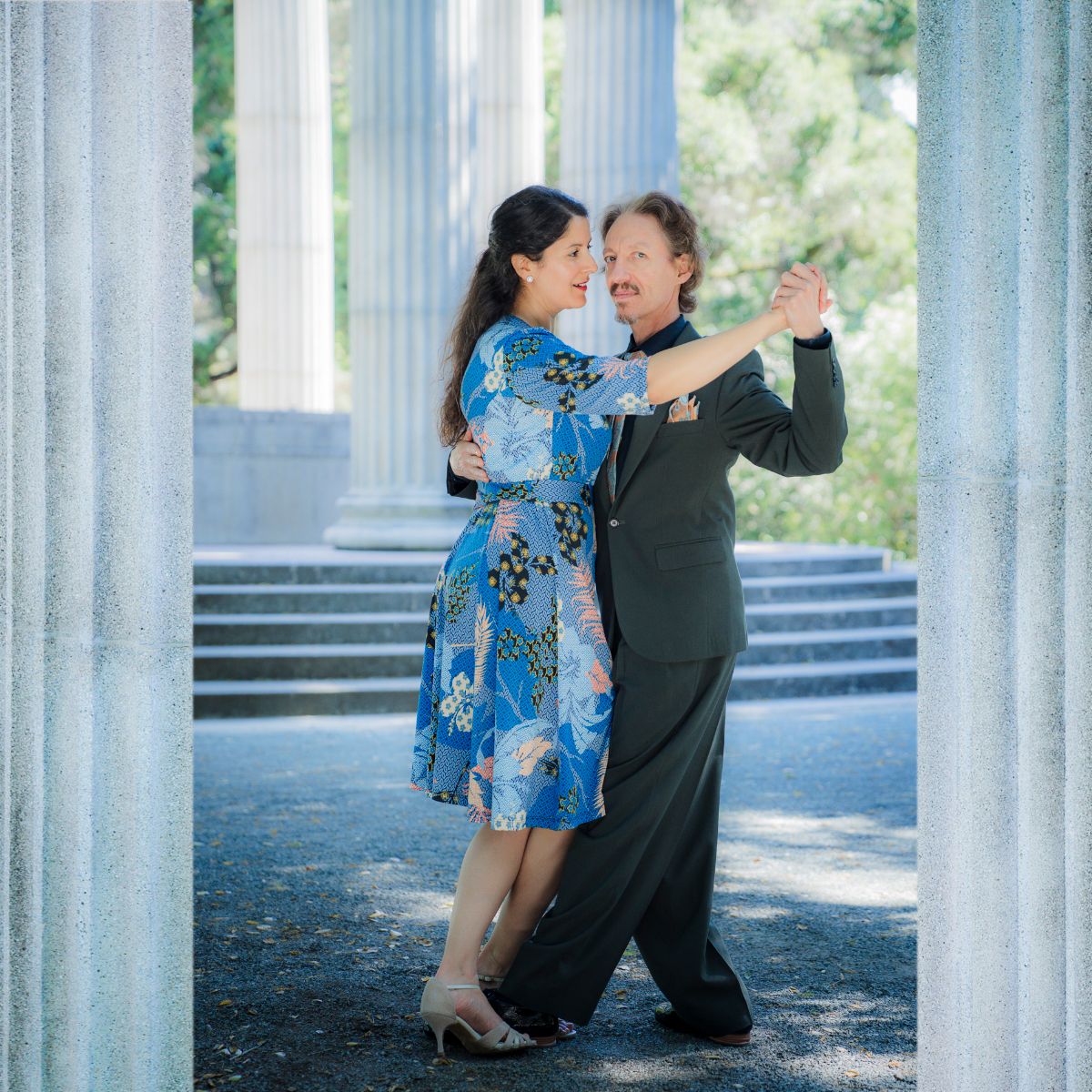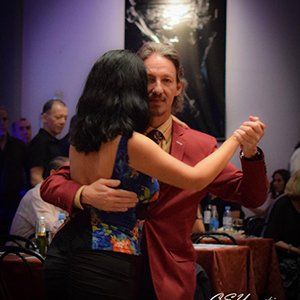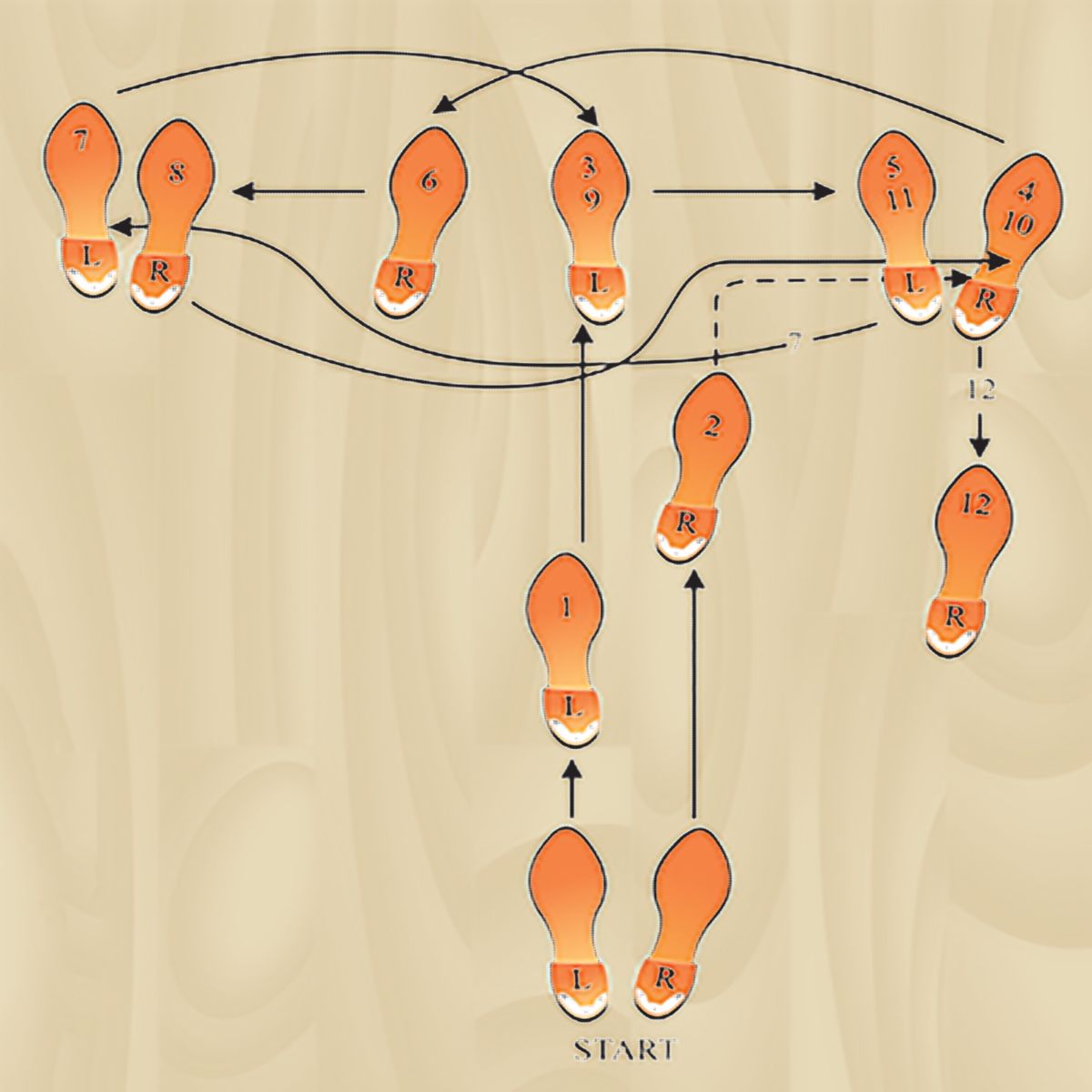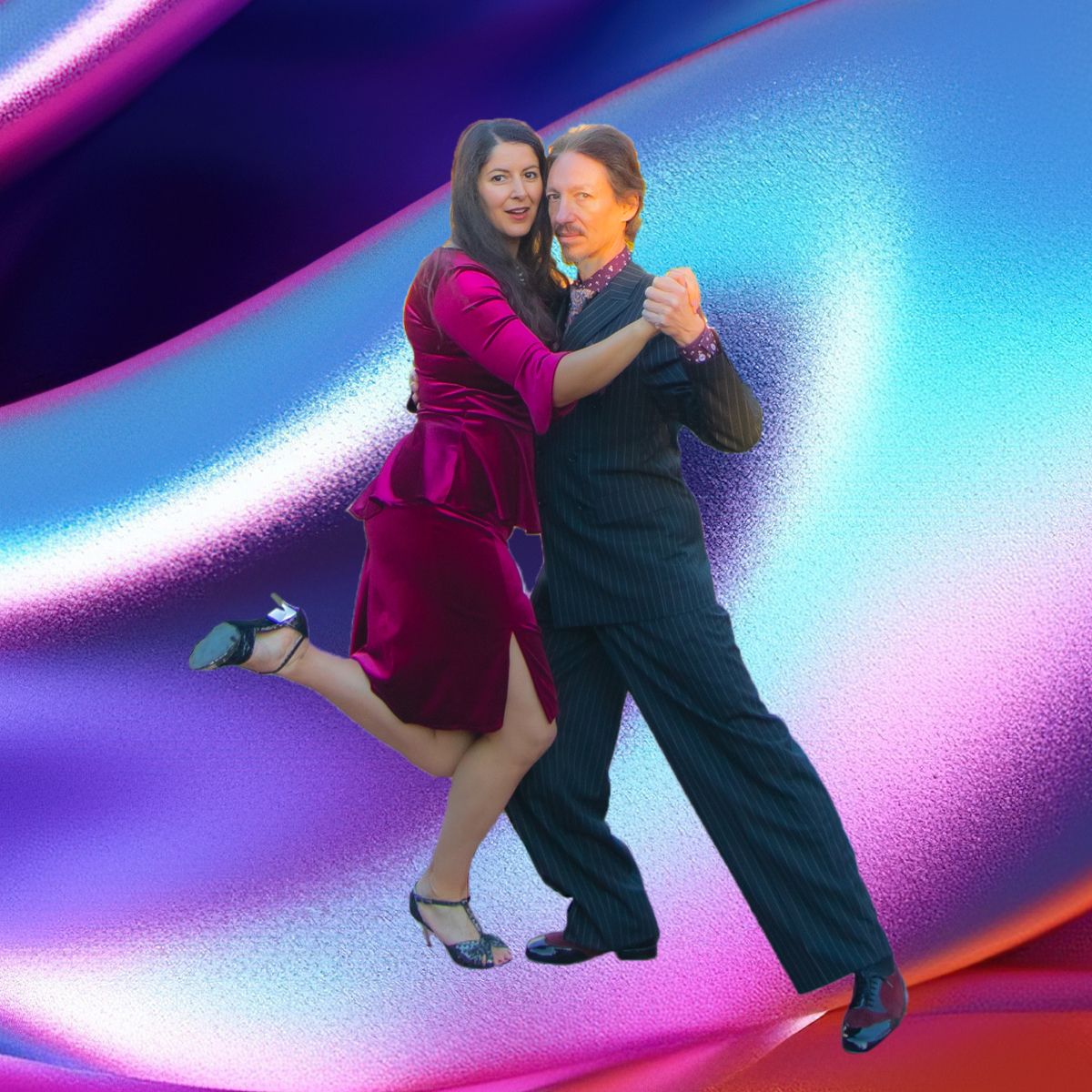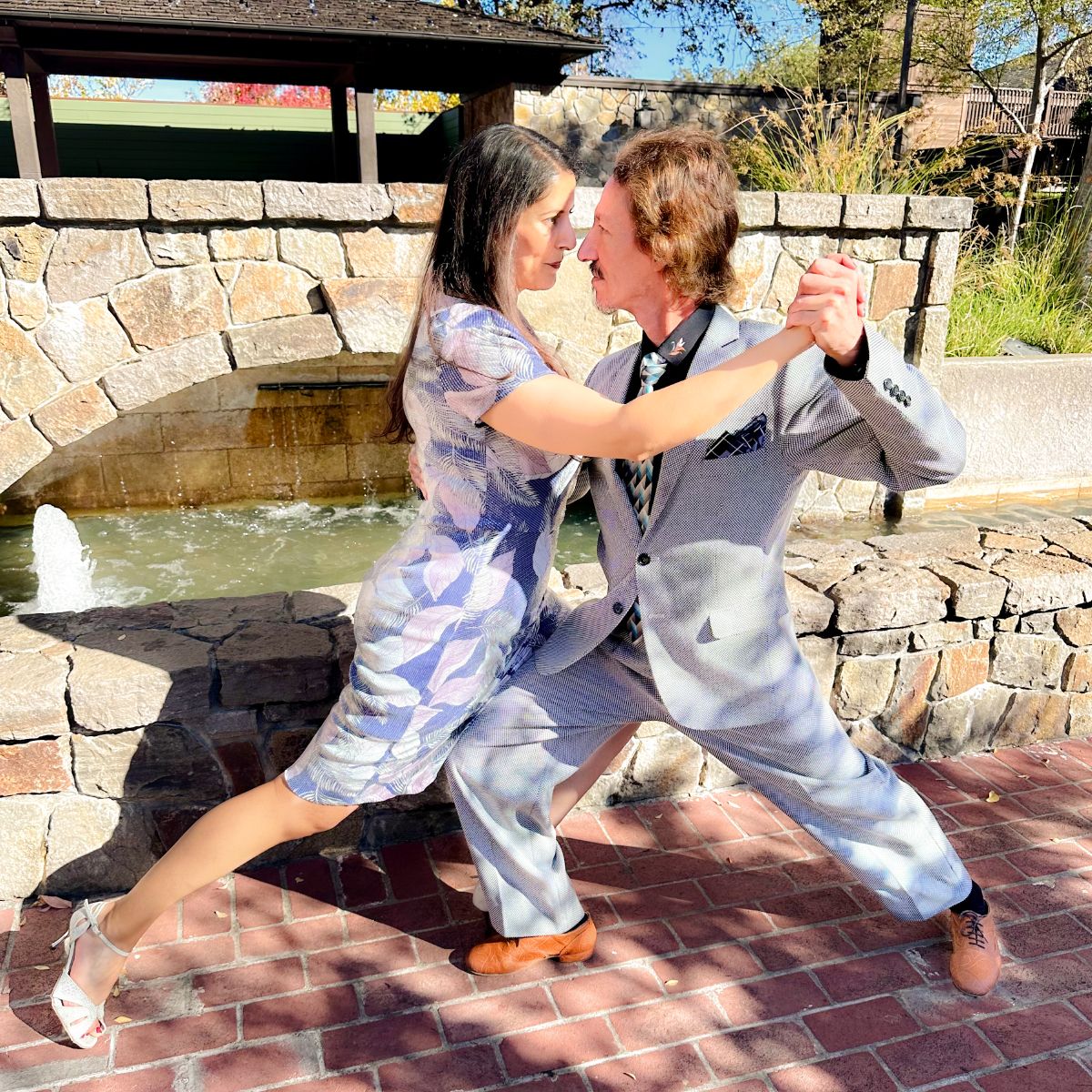Embracing the Essence of Argentine Tango: A Journey through Beauty, Honesty, and Belonging in the Milonga
Embracing the Essence of Tango: A Journey through Beauty, Honesty, and Belonging in the Milonga

Tango is a dance between partners characterized by an embrace.
Hence, the essence of Tango is inherently tied to the continuous embrace between partners; without this connection, it ceases to be authentic Tango. While the intricate footwork holds significance, it remains secondary. The actual test of Tango lies in the ability to dance seamlessly while maintaining the embrace. It’s crucial to understand that every movement in Tango serves the purpose of preserving the embrace and actively creating and enhancing it.
Tango commences with the initial embrace, evolving through a sequence of movements that draw us closer, ensuring a continuous and intimate connection between partners.
Tango is more than just a dance; it is a social experience that immerses you in a vibrant community, thriving within the milieu of the milonga.
Tango transcends mere dance; it is a social tapestry woven within the vibrant community of the milonga. The milonga is more than a dance floor; it resembles a sacred space, a temple of shared passion. Here, understanding and respecting the milonga’s rituals become imperative, not as rigid rules, but as acknowledging the collective spirit that has shaped this unique environment. It entails listening and paying heed to those who have dedicated their lives to its rhythm. While the intricacies may not immediately reveal themselves, the threads of tradition and practice weave a tapestry of profound meaning over time. To truly grasp this essence, one must think like a dancer—a realization that unfolds through the journey of becoming a dancer, a transformation that unfolds with time and dedication.
A true milonga is more than a place that merely adopts the name; it embodies a distinctive atmosphere and essence that authentically defines it.
A genuine milonga distinguishes itself not merely by name but by the substantial knowledge of its participants in the nuanced aspects of both the milonga and the dance. Much like a family or a country, the milonga operates on a set of shared understandings and traditions. As a newcomer, you are regarded with the respect accorded to a “baby” in the family, but it is essential to recognize that, akin to an immigrant in a new country, there are certain limitations as you navigate your way into the community. Understanding and accepting the milonga’s ideals is akin to showing your commitment to becoming a valued member. While incorporating your own unique traits is encouraged, there is a starting point that aligns with the collective beginning shared by everyone in the community. An actual milonga is characterized by a balance between seasoned, senior “family” members and new dancers. When a venue predominantly attracts new participants with minimal or no presence of experienced members, it deviates from the essence of a genuine milonga. Unlike an unrestricted playground where anything goes, a milonga is a structured space where the interplay of tradition, guidance, and shared experience ensures a dance environment with depth and authenticity.
Tango finds its origins in the deepest facets of human nature.
Understandably, people perceive Tango as an expression of their body’s innate movements and emotions when embracing a partner and dancing to the rhythm of their favorite music, given that Tango is rooted in the profound characteristics of human existence [1]. This perspective holds true to a certain extent. However, it’s essential to recognize that Tango transcends individual experiences; it exists beyond the confines of personal embodiment and extends beyond one’s lifetime.
If you are drawn to Tango, if you sense Tango within, if your love for Tango and its music defines you, if you embody Tango; then, unquestionably, you belong to Tango.
In the same way that belonging to a city, such as San Francisco, California, instills a sense of pride in being able to guide a visitor through its streets, not knowing the names of those streets would cast doubt on your connection to the city. Imagine suddenly discovering you belong to a family you never knew existed. At any age, the desire to learn about this newfound family becomes a fundamental aspect of understanding your identity. Delving into its origins and exploring the complete genealogy becomes a natural and important curiosity, wouldn’t it? If you visit Paris, fall in love with the city, and choose to make it your home, mere knowledge of your address wouldn’t likely suffice. Your satisfaction would stem from exploring the city’s rich tapestry, delving into its culture, landmarks, and diverse experiences. Living in Paris would likely inspire a desire to embrace the entirety of the city, far beyond the confines of your home address. Imagine discovering Tango, perhaps through a mesmerizing performance that ignites a desire within you, a silent proclamation of “I want to do that.” Reflecting on what captivated you, was it the attire, the dance moves, the music, the attitudes, or perhaps a combination of these elements? Intrigued, you decide to take a class. A good Tango class introduces you to the fundamental components: basic moves, insights into rhythm, posture, the embrace, and even a glimpse into Tango’s rich history. Without at least a touch of these elements, you might find yourself seeking another class offering a more comprehensive introduction to the captivating world of Tango.
A genuine teacher imparts the art of dancing Tango in a manner reflective of how it is elegantly performed in the most authentic milongas of Buenos Aires.
An authentic teacher not only instructs you in the dance of Tango as it is gracefully performed in the most genuine milongas of Buenos Aires but also possesses the ability to transmit this knowledge through personal experience. To effectively convey the intricacies, the teacher engages in the practice themselves—dancing in the milongas, being an integral part of the Tango family, understanding the nuanced geography of Tango, all stemming from a profound love for the dance form. To truly understand and experience authentic Tango, the journey often leads to Buenos Aires. Yet, even within this city, finding the genuine heart of Tango can be challenging. The abundance of events labeled as milongas may not necessarily embody the true essence. Navigating this intricate dance world is best achieved with guidance from someone deeply rooted in the Tango realm, someone who belongs to it. You won’t be the first or the only one seeking this path; everyone in the milonga embarked on a similar journey, guided into the realm of Tango by those who understood its intricacies. You would be delighted to learn about the History of Tango! While the joy of dancing Tango indeed offers a unique escape into the present, understanding its historical roots enriches the experience, connecting us to the shared moments of all those who have danced Tango in the past. It’s a beautiful reminder that the “present” in Tango is a continuum, weaving together the threads of time and shared passion. In the era when Tango reigned as the most popular activity in Buenos Aires, stepping into a milonga for the first time was a significant and ceremonial event. Typically, you would be accompanied by a seasoned regular, often a relative, making the analogy to a family gathering quite fitting. Prior to your inaugural milonga experience, extensive preparation would take place at home, in the social club of your neighborhood, and during family gatherings with relatives and friends. This meticulous groundwork ensured that your introduction to the dance floor was not only seamless but also steeped in the cultural and social nuances of Tango.
The role of a Tango instructor extends beyond teaching dance steps.
The role of a Tango instructor extends beyond teaching dance steps; it encompasses the task of integrating a new student into the rich and nuanced world of the milonga. This involves not only imparting technical skills but also fostering an understanding of the cultural, social, and historical dimensions that make Tango a holistic and immersive experience. Indeed, while the primary task of a Tango instructor is to introduce students to the milonga, some inadvertently guide their students towards group integration without emphasizing the development of individuality in the milongas. This can lead to a dynamic where students become assistants in the organization of their teachers’ classes and events, remaining connected to Tango in an indirect manner. A comprehensive Tango education should encourage both group cohesion and the blossoming of individual expression within the vibrant tapestry of the milonga. Groups authenticate each of its members. As a teen, with my friends, we once got into a very popular quinceañera party where nobody knew us. A few of us climbed onto the club’s roof where the party was taking place and entered through the bathroom window. Once inside, unnoticed, we took place at a table with empty chairs close to the door. The rest started to enter through the door, and we greeted them. That was enough to let them in. We authenticate them, so they were authenticated by the group members as belonging to the whole group. My experience at the quinceañera party vividly illustrates the concept that groups can serve as authenticators for their members. By integrating yourselves into the group unnoticed and then greeting others as they entered, you effectively signaled to the rest of the group that these individuals belonged. In this way, the group served as a social authentication mechanism, affirming the membership of those greeted by its existing members. This phenomenon underscores the social dynamics at play within groups, where shared identity and acceptance are key elements. The story takes an unexpected turn with the misbehavior of some boys in the group, resulting in cake-throwing that unfortunately reached the quinceañera’s dress. Such antics understandably drew the attention of the adults, leading to the discovery of the outsiders. The consequence was expulsion from the party. Had the group maintained more moderate behavior, it’s plausible that we could have integrated into the wider community of the quinceañera party, possibly staying until the end and making new friends. The deviation from expected norms, exemplified by the cake-throwing incident, played a crucial role in maintaining a distinction between your small, closed group and the larger community. It highlights the delicate balance between conformity and acceptance within social gatherings.
Tango holds significant importance in your life.
I have deliberately chosen within the Tango community the oldest individuals who began dancing Tango during their teenage or even childhood years, with no aspirations for it to become a profession. For these individuals, Tango held profound significance as it was an integral part of the collective life in Buenos Aires, Montevideo, and Rosario. Born between 1920 (Roberto Segarra) and 1944 (Ricardo “Tito” Franquelo),(Roberto Segarra) and 1944 (Ricardo “Tito” Franquelo)[2], these individuals viewed Tango not merely as a dance but as a vital aspect of their identity, complementing other significant elements such as football. They frequented milongas with relatives and friends, formed connections, met spouses, and later returned as couples with other befriended couples. Even during times of separation, divorce, or the loss of a partner, they found solace in returning to the milongas. The milongas, therefore, serve as recorded reflections of their rich and multifaceted lives. At the time of this writing, these individuals exuded exceptional wisdom, evident in their demeanor, dance style, conversations, interactions, handshakes, and embraces. Their unique power emanated from the awareness that the days ahead were outnumbered by those behind, fostering a fearlessness in their sincerity. In each dance move, word, and gesture, they invested everything, authentically and without the need for pretense. This honesty was a particular privilege, as Tango, especially within the proximity of a close embrace, inherently demands truthfulness. Furthermore, their status as non-professional dancers exempted them from the need to feign amiability for business purposes, allowing them to engage in a natural and honest way.
Appreciating these subtleties indeed requires a certain level of education and sensitivity.
Appreciating these subtleties indeed requires a certain level of education and sensitivity. Not everyone might inherently notice these nuances, and guidance or exposure can significantly contribute to developing an understanding of the intricacies involved. Life experiences, the cultural backdrop in which one grows up, and personal sensitivities all play roles in shaping this awareness. Those fortunate enough to have familial roots intertwined with Tango may have an early foundation, but for others, formal education or exposure through various channels, such as classes and private lessons with great Maestros, becomes a valuable means to cultivate the sensitivity needed to perceive the depth and richness of Tango and its associated subtleties. Certainly, the essence of regularly attending milongas lies in the profound appreciation for the music and the dance itself. For a dedicated dancer, the aesthetic experience of moving to good music alongside skillful partners is paramount. While the ambiance, lighting, and other elements contribute to the overall experience, the core attraction remains the quality of the music and the expertise of fellow dancers. Choosing a milonga based on these primary factors reflects a commitment to the genuine joy and fulfillment found in the art of dancing. Absolutely, while the social aspects, meeting new people, and enjoying a vibrant crowd can be part of the overall experience, the essence of the Tango experience lies in the deep appreciation of its aesthetics and the dance itself. The unique beauty of Tango, both in its music and the intricate movements shared between partners, creates a distinctive atmosphere that goes beyond mere social interaction. Focusing on the core elements of Tango, its aesthetics, and the art of the dance allows enthusiasts to tap into the rich and fulfilling essence of this unique cultural expression. Your level of commitment, understanding of the art, and sensitivity to Tango contribute significantly to the overall atmosphere of the milonga. This parallels the experience of attending a concert where the appreciation for the music varies between those well-versed in the genre and those less educated in it. In the participative nature of a milonga, you’re not merely an audience member; you play an active role in shaping the collective experience. Your commitment and engagement, both in understanding the nuances of the music and dance and in actively participating, influence and enhance the overall dynamics of the event for everyone involved. Dance, particularly Tango, is an expression of beauty that transcends the purely visual. While we initially discover Tango through our eyes, its visual components are more than surface aesthetics—they are manifestations of internal mechanisms underpinning its essence. Constructing your dance from a solely visual perspective would be a misstep; instead, the visual beauty in Tango emerges as the culmination of these internal dynamics. What we see in Tango is the radiant outcome, the glow that emanates from the intricate interplay of its inherent elements. Tango is a profound kinetic experience, engaging us through the sensual aspects of the sensations elicited by the movements of our body and our partner’s body. Simultaneously, it is an auditory journey, where Tango music serves as a guiding force, directing the way we move in connection to our partner. The dance and the music intertwine to create a multisensory exploration, enhancing the richness of the Tango experience.
It is not Tango if you dance with the goal to be seen.
True Tango is not about dancing with the primary goal of being seen; rather, it’s a dance where seeing is important as a guide. Observing couples on the dance floor at milongas, the true essence of Tango becomes apparent when a pair dances for each other. Their movements align with the music, and they show respect for everyone around them, maintain good posture, and let the dance unfold effortlessly, without excessive force or contrived steps. The authenticity of Tango shines through when the connection between the partners and the music takes precedence over external appearances. Indeed, the eyes play a significant role in the non-verbal communication of Tango, particularly in the invitation to dance. The act of looking at the person you wish to dance with and patiently waiting for them to reciprocate by making eye contact creates a subtle yet powerful connection. This exchange of glances serves as a form of invitation, an unspoken dialogue that adds to the nuanced and intricate social dance of Tango.
Patience is an indispensable virtue in Tango.
A misguided approach to fostering a Tango community is providing support for reasons external to Tango itself. This can be a significant mistake as it may lower the overall quality of the dance and encourage misinterpretations. It is more beneficial to direct support towards those who actively contribute to the improvement of the dance at milongas, ensuring a commitment to the genuine art and integrity of Tango within the community.
Tango is a dance form that embodies beauty, honesty, humility, greatness, and a profound sense of reality.
There are lots of lies, misunderstandings, and misinterpretations surrounding Tango. But the truth comes out in the milongas. Remember that, for me, milonga is a very special name that I do not give to just any gathering where people play music that they believe is suitable to dance Tango, and move in a way they decided to call Tango. I aim to pass on my knowledge to those who wish to carry forward the lineage of Tango—an art that I find beautiful, honest, humble, great, and profoundly real.
Although there’s so much I could share about Tango, I believe the best way to understand it is to go dancing, just as I’m about to do now.
[1] Characteristics of a human being: a) its unique body. b) A limited existence in time (to be born and to die). c) To be consciously aware of it. All of these three characteristics imply sexuality.
[2] According to Enriqueta Kleinman and Mónica Paz, these were, at the time of this writing, the oldest and the youngest milongueros, respectively. Roberto Segarra. Ricardo “Tito” Franquelo.
More articles about Argentine Tango
